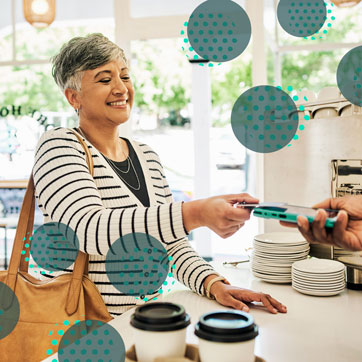No card signature needed: New tech boosts credit & debit security
July 16, 2025 • 5 minute read
No card signature needed: New tech boosts credit & debit security
No signature required
Credit cards as most of us think of them have been around since the 1950s, and it’s surprising how little their design has changed. For decades the core informational elements stayed the same and included your name, account information, expiration date and signature panel to help a vendor confirm your identity by matching the signature on your card with the signature on your receipt.
And now you might be noticing something different. With changes in technology and credit and debit card security, signature panels have become obsolete. In fact, the major credit card companies stopped requiring signature panels in 2018. That’s all because of new technology and improved fraud prevention measures.
Advanced technology improves fraud prevention
Advanced technology improves fraud prevention

Advanced technology improves fraud prevention
Signature comparison was never incredibly effective for deterring fraud or card theft. Most cashiers aren’t trained in handwriting analysis. Then, as online and over-the-phone transactions became more common, the main concern shifted from theft of the physical card to theft of card information. In response, more sophisticated technologies have come into play.
EMV chips prevent account number theft.
Every time you make a purchase using your card’s microchip, a unique one-time code is created. By using the chip instead of the card’s magnetic stripe, your account information is sent in an encrypted format, making it difficult to steal. If you add a PIN to complete your transaction, you’re doubly secure.
Contactless payments are equally safe.
Tap to Pay uses radio waves to transfer information across short distances. The technology, called Near Field Communication (NFC), transmits encrypted account information to a merchant’s payment terminal to make secure payments.
There are multiple ways to prove your identity.
Multifactor authentication, or simply two-factor authentication, is used in many contexts to prove identity. This means you have more than one way to verify you’re who you say you are. In addition to being asked for account information, you could be asked for the three-digit CVV code on the card’s back. You might also be asked to retrieve a text or email code or to use biometric identification, such as fingerprints or facial scans, for online purchases.
Technology continues to evolve.
Newer technological inventions include randomized tokens in mobile wallets that hide sensitive account information by replacing account numbers with other random numbers, and dynamic CVVs, where unique 3-digit codes are sent via text to keep thieves guessing. The latter method is even more secure than the single, static number printed on the back of your card. All these advancements help protect your account and finances.

Fraud monitoring occurs in real time.
Whether a thief has the information from your credit or debit card, or the card itself, it’s good to know that fraud monitoring is always happening. When behavior-based algorithms find unusual activity, a fraud alert is triggered. Fraud monitoring is a common reason for declined transactions while traveling; the transactions appear suspicious. That’s why it’s a good idea to set travel alerts and let your financial institution know you’re on holiday and a criminal hasn’t taken your card to the beach. At the same time, monitoring like this can stop fraud in its tracks.
Locking your card is easy.
Finally, if you lose a card, you can typically sign in to your online account and put a lock on most credit or debit cards. Locking your card is a convenient solution when you’re unsure if it was stolen or merely misplaced. Locking prevents the card from being used until you find it and unlock it from your online account. If you don’t find your card, the next step is to report the card missing and request a new one.
Disclosures
All loans subject to approval
